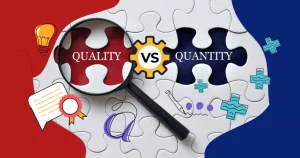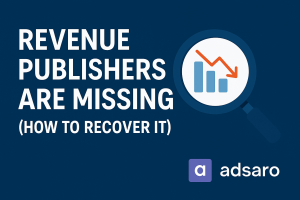In the digital age, children are more connected than ever—watching videos, playing games, and exploring content across websites, apps, and streaming platforms. With this increasing online presence comes a surge in children’s online advertising aimed at young audiences. But advertising to minors isn’t just another marketing opportunity—it’s a legal minefield filled with complex legal considerations for children’s advertising.
Children’s online advertising is governed by a complex set of regulations designed to protect young users from manipulative content and inappropriate data practices. For advertisers and publishers, understanding the legal considerations for children’s advertising is not just about avoiding fines—it’s about building trust, ensuring safety, and maintaining ethical integrity in the digital ecosystem.
In this blog, we’ll break down the major laws, explore the do’s and don’ts of advertising to minors, and explain how you can create compliant and effective online ads for kids.
1. Why Children’s Online Advertising Is Regulated So Heavily
Children, especially under the age of 13, are considered legally incapable of understanding persuasive intent in advertising. This makes them a highly sensitive demographic, prone to influence and exploitation.
To counter this, governments have implemented stringent regulations that apply to children’s online advertising, focusing on both content and data collection methods. These rules aim to:
- Prevent exploitation of children’s inexperience
- Ensure parental oversight
- Protect children’s personal data
- Encourage ethical marketing practices
As a result, publishers and advertisers must tread carefully when crafting ads that could potentially reach or appeal to minors.
2. COPPA: The Core of U.S. Regulations for Children’s Advertising
The most prominent law concerning advertising to minors in the United States is the Children’s Online Privacy Protection Act (COPPA). This law is enforced by the Federal Trade Commission (FTC) and specifically targets the online collection of personal information from children under the age of 13.
What Triggers COPPA Compliance?
You must comply with COPPA if:
- Your platform is directed at children under 13
- Your platform is general audience but you knowingly collect data from under-13 users
- You serve ads through third-party platforms that collect children’s data
Key COPPA Compliance Requirements:
- Verifiable Parental Consent (VPC): Before collecting any personal information, businesses must obtain clear, verifiable consent from a parent or guardian.
- Privacy Policy Transparency: Your site or app must display a clear privacy policy detailing what information is collected, how it’s used, and with whom it’s shared.
- Right to Access and Delete: Parents must be able to review and delete their child’s data at any time.
- No Behavioral Targeting: Personalized ad targeting based on online behavior is not allowed for children under 13 without consent.
- Data Security: All collected data must be securely stored and protected from unauthorized access.
Non-compliance with COPPA can result in penalties up to millions of dollars—making COPPA compliance an absolute priority for any ad-serving platform targeting or accessible to kids.
3. Ethical and Legal Challenges in Online Ads for Kids
Creating online ads for kids isn’t just about legal compliance—it also involves navigating sensitive ethical terrain. Children often can’t distinguish between editorial content and advertisements, especially with native ads and influencer promotions.
Types of Ads That Require Special Care:
- Display Ads: Should be clearly labeled and free of manipulative design (e.g., flashing buttons, misleading visuals).
- Video Ads: Must avoid disguised marketing in entertainment content; disclosures should be obvious and age-appropriate.
- In-App Ads and Purchases: Should not encourage children to make purchases or mislead them into buying through “accidental taps.”
- Sponsored Content and Influencer Marketing: Must disclose sponsorship in a simple, visible, and child-friendly way.
Using transparency, restraint, and clear language are all part of both the legal considerations for children’s advertising and building a trustworthy brand in the eyes of both kids and parents.
4. Privacy & Data Collection: Proceed with Caution
One of the most sensitive areas in children’s online advertising is the collection and handling of user data. Personal information under COPPA includes not just names and emails, but also:
- Geolocation data
- IP addresses
- Device identifiers
- Cookies used for behavioral targeting
Even features like comment sections, avatars, and photo uploads can fall under regulated territory if not designed correctly.
The safest approach is data minimization—collect the least amount of data possible and avoid personalized ads unless full parental consent is verified. Contextual advertising (based on page content, not behavior) is often the most compliant route.
5. International Laws: It’s Not Just COPPA
If you’re advertising to children outside the U.S., be aware that many countries enforce their own child privacy protections.
Examples of International Children’s Ad Regulations:
- GDPR-K (EU): Sets the age of digital consent at 16, requiring parental approval for data collection below that age.
- UK’s Age Appropriate Design Code: Mandates that digital services used by children be privacy-first by design, with limitations on nudging, profiling, and behavioral targeting.
- Canada (PIPEDA) & Australia (Privacy Act): Both include strong data protections and guidelines for marketing to young users.
Understanding these international differences is crucial for any global campaign involving online ads for kids.
6. Publisher’s Responsibility in Serving Compliant Ads
Publishers play a frontline role in ensuring children’s online advertising remains compliant. That means using vetted ad networks, implementing age-gating when appropriate, and disabling tracking technologies for underage users.
Publisher Best Practices:
- Partner only with ad networks that offer COPPA-compliant targeting options
- Use content-level filters to block inappropriate ads
- Avoid redirecting kids to third-party sites that may collect data
- Provide ad-free or limited-ad experiences for logged-in child users
For platforms and publishers, the cost of overlooking these details can include regulatory action, reputational harm, and loss of user trust.
Conclusion:
Advertising to minors is no longer just about reach and impressions—it’s about responsibility. The legal landscape surrounding children’s online advertising is evolving fast, and the margin for error is shrinking. By focusing on COPPA compliance, respecting privacy, and adhering to ethical standards, advertisers and publishers can engage young audiences in a safe, transparent, and meaningful way.
Ultimately, when done right, online ads for kids can be both effective and respectful. The key is to treat child users not as targets—but as individuals whose safety and rights come first.








Leave a Reply